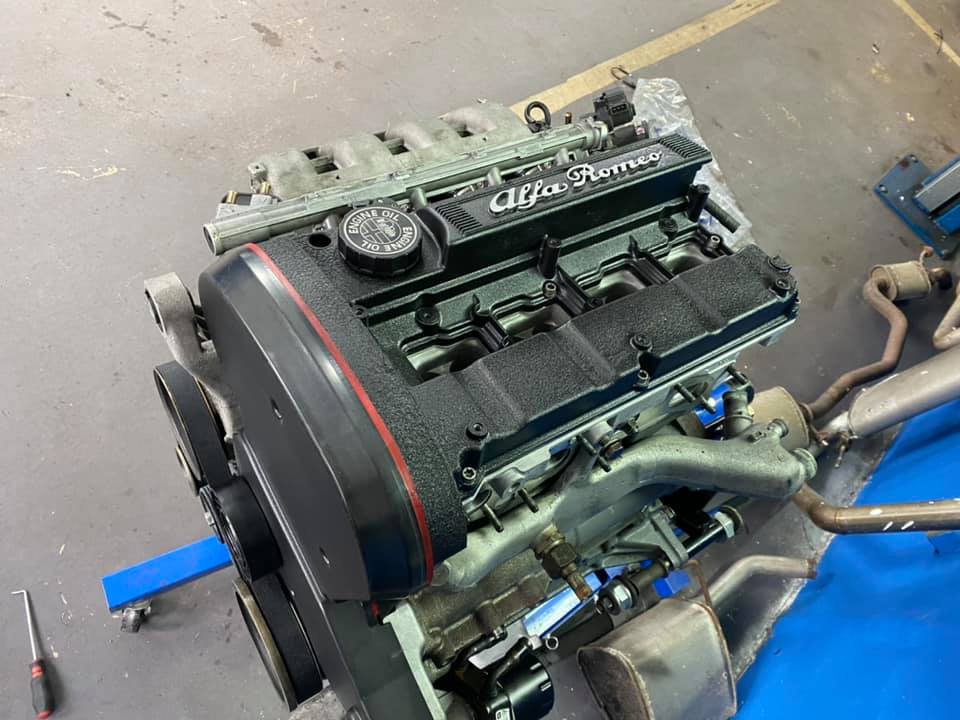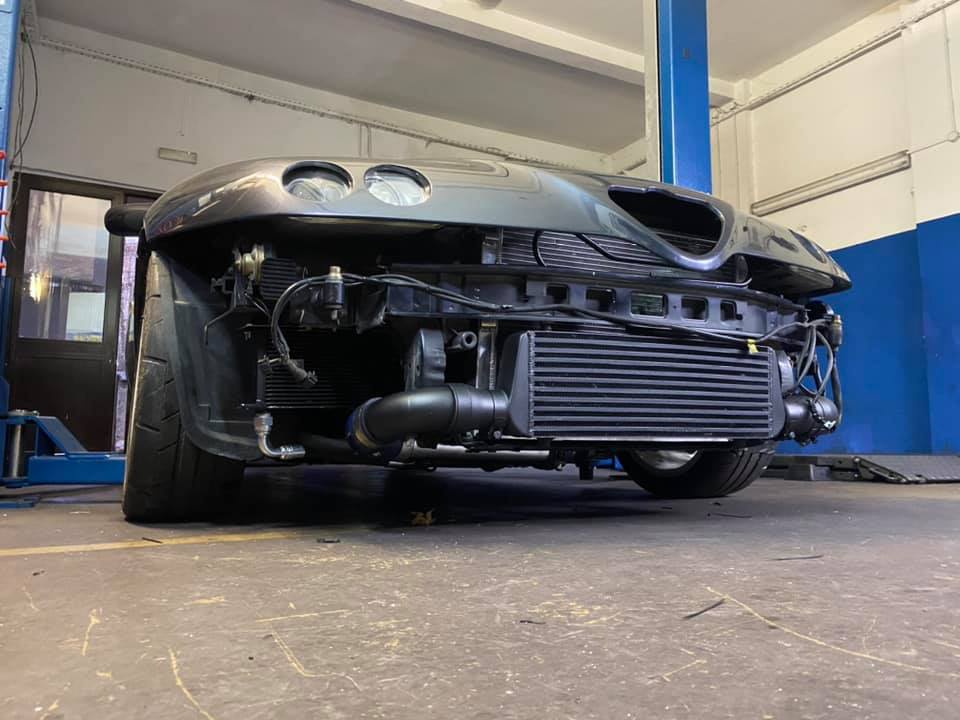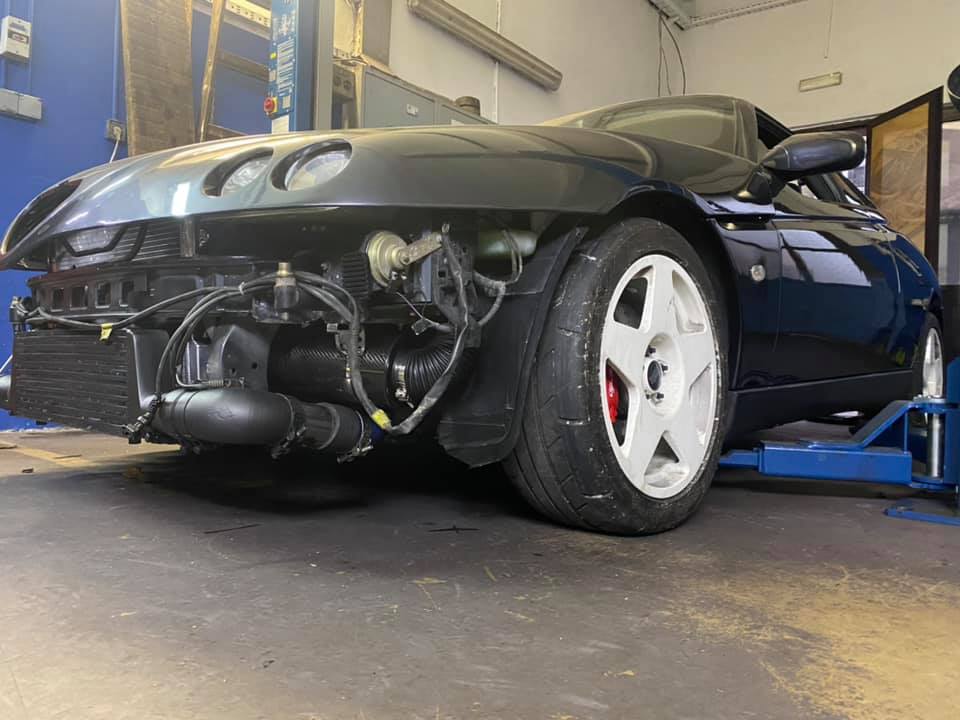Automobili (i sve oko toga...)
-

- Robert_84
- Korisnik
- 9
-

- Robert_84
- Korisnik
- 9
-

- smayoo
- Moderator
- 558
-

- Robert_84
- Korisnik
- 9
-

- smayoo
- Moderator
- 558
-

- Djuro genijalac
- Korisnik
- 378
-

- Djuro genijalac
- Korisnik
- 378
-

- smayoo
- Moderator
- 558
-

- smayoo
- Moderator
- 558
-

- dario15
- Korisnik
- 8
-

- jura22
- Korisnik
- 62
-

- smayoo
- Moderator
- 558
-

- smayoo
- Moderator
- 558
-

- jura22
- Korisnik
- 62
-

- Robert_84
- Korisnik
- 9
-

- jura22
- Korisnik
- 62
-

- Robert_84
- Korisnik
- 9
-

- Robert_84
- Korisnik
- 9
-

- Djuro genijalac
- Korisnik
- 378
-

- Robert_84
- Korisnik
- 9
-

- jura22
- Korisnik
- 62
-

- dpasaric
- Admin
- 895
-

- Robert_84
- Korisnik
- 9
-

- smayoo
- Moderator
- 558
-

- smayoo
- Moderator
- 558
-

- smayoo
- Moderator
- 558
-

- Robert_84
- Korisnik
- 9
-

- smayoo
- Moderator
- 558
-

- Robert_84
- Korisnik
- 9
-

- smayoo
- Moderator
- 558
Moderatori: Bertone
Vikalica™
Zadnja poruka: pred 4 sati, 15 minuta
- Damirst: Ekipa, ima li netko za prodati grafičku Radeon HD 6970M za iMac 27 mid 2010?
- smayoo: I na ffox isto
- stefanjos: oglasnik opet u banani, bar na chromeu
- ZeljkoB: Ako netko trazi iPad Pro 11" ili iPhone 12 Pro Max, u oglasniku su, slike detaljne na zahtjev, sve kao novo
- Lihto: Može

- dpasaric: Ili ga stavi negdje sa strane. pa da ga baš ne frkneš donesi u muzej kada budeš prolazio nekom prilikom, baš ću ovih tjedana slagati novi Apple postav, pa ću vidjeti treba li mi još koji, znam da 2-3 imam sigurno u skladištu...
- Lihto: Hvala Davore, znači ide u reciklažu..
- dpasaric: Više ne vrijedi, njegovo vrijeme je davno prošlo, to je muzejska stvar, a i muzeju ih imamo hrpu...
- Lihto: Jel vrijedi šta orginal Apple dock sa 30pin kablom za iPhone 4/4s? Ako netko želi kupiti može na pm..
- dpasaric: Konačno neki hardver test, dugo mi nitko nije želio ustupiti računalo za test, ali sada se našao dobrovoljac!

- dpasaric: Stigao mi je novi MacBook Pro M4 Pro na Jabučnjak test!

- smayoo: RIP David Lynch
- ^SuperUnknown^: Treba tko Time Capsule 1st gen? 500 i 2000 GB modeli, restauriranih napajanja (40/50E cijene). Javite u PM ako tko treba

- accom: Windy. Meni odličan.
- smayoo: Nije nijedna 100% i uvijek točna, ali za Hrvatsku je HRT Meteo meni najtočnija
- smayoo: Za Hrvatsku HRT Meteo
- Matija klc: Teski ocaj. Trenutno mecava u mom gradu a u njoj pise kisa da pada. Sta koristite vi ekipa?
- Matija klc: Koju aplikaciju za vrijeme koristite? Ova standardna od Apple-a je postala
- smayoo: Piši u forum
- Air: Kod instalcije mi se oštetio jedan user na način da jedinio kod njega ne mogu otvoriti System preferece.
- Air: @Bertone hvala. Odradio sam direktno preko instalera Apple. Spremim ovaj link za kasnije.
- Bertone: [link]
- Bertone: @Air, [link]
- Yonkis: Settings , General, Dictionary. Bilo mi je uključeno. Nisam to upalio 100%
- Air: netko je stavio na Jabucnjaku link sa operativnim sistemima koji nisu više podržani od Apple-a. Ja ne mogu naći taj post. Trebam Big Sur. Ako netko zna sa koje stranice je siguno sikuniti?
- smayoo: Nemam pojma. Gdje si to našao?

- Yonkis: Kakav je ovo hrvatsko engleski rječnik? [link]
- ^SuperUnknown^: Ekipa, trazim tipkovnicu tj. top case za prvi Intel Macbook (Macbook1,1-4,1 A1181), po mogucnosti bijelu, ali moze i crna
 Ako tko ima od nekog krepanog javite
Ako tko ima od nekog krepanog javite  Thx!
Thx! - kupus: tražim 30 pin na lighting adapter, ako ima tko viška - PM
- stefanjos: sretna nova!
- Yonkis: Sretna vam ova nova 2025!
- dpasaric: Kreativna vam 2025. godina! Kanpai! [link]
- JOHN: Sve najbolje u novoj godini. Puno zdravlja, sreće i uspjeha.
- zoranowsky: Sretna Nova!
- Miro Spiro: Sretna Nova godina
- Matija klc: Sretna Nova svima
- Gjuroo: Sretna nova!
- Bertone: Sretna Nova
- Zdravac: Sretna Nova, i svako dobro vam želim!
- dpasaric: Svako dobro i da vam 2025. bude još bolja!

- smayoo: SRETNANOVAGODINAAAAAAAA!!!!

- Yonkis: dpasaric, I think you're gonna love it

- dpasaric: Kako imamo Lisu u Pikiju, to mi je na listi za gledanje!
- Yonkis: [link] netko već gledao?
- Zdravac:

- JOHN: Jel prolazi integralni?

- Zdravac: @JOHN, lagano sa ugljikohidratima (kruh), rakija je, s druge strane, preporučljiva

- ping: Sretan Božić
- JOHN: Sretan i blagoslovljen Božić. Pazite na slatko i slano. Samo kruh i voda i ajde može i pijača!

- zoranowsky: Sretan Božić!
Prijava
Prisutni jabučari
Novo na Jabučnjaku
Teme
- Razno: Ukrajina | 25.02.2022 | 17:47 | drlovric
- Hardver: Magsafe? | 23.01.2025 | 10:24 | drpongrac23
- Razno: Evo i malo humora... | 10.11.2011 | 14:05 | Yonkis
- Razno: Ljetovanje, ljetovanje, tralalala... :) | 28.06.2021 | 19:54 | Yonkis
- Razno: Božić i Nova godina | 24.12.2010 | 17:59 | smayoo
- Razno: Coronavirus / COVID-19 | 12.03.2020 | 16:47 | dpasaric
- Razno: Kupovina elektricnog auta... | 08.01.2025 | 13:17 | smayoo
- Igre: MiSTer FPGA retro computing | 19.01.2025 | 16:32 | dpasaric
- Igre: Nintendo Switch 2 | 19.01.2025 | 14:53 | Riba
- Igre: Disco Elysium | 13.08.2020 | 15:01 | Riba
- Razno: kafanska laprdanja | 17.09.2023 | 12:44 | cariblanco
- Hardver: Mac Mini PRO | 03.01.2025 | 14:50 | drpongrac23
Poruke
- Razno: Ukrajina | 23.01.2025 | 17:10 | drlovric
- Hardver: Magsafe? | 23.01.2025 | 16:57 | drpongrac23
- Razno: Ukrajina | 23.01.2025 | 16:01 | JOHN
- Razno: Evo i malo humora... | 23.01.2025 | 15:52 | Yonkis
- Razno: Ljetovanje, ljetovanje, tralalala... :) | 23.01.2025 | 15:46 | Yonkis
- Razno: Ukrajina | 23.01.2025 | 13:40 | smayoo
- Razno: Ukrajina | 23.01.2025 | 13:32 | cariblanco
- Hardver: Magsafe? | 23.01.2025 | 11:19 | smayoo
- Razno: Ukrajina | 23.01.2025 | 10:50 | tino1
- Hardver: Magsafe? | 23.01.2025 | 10:24 | GlupaMatrica
- Razno: Ukrajina | 23.01.2025 | 07:13 | Maxxy
- Razno: Ukrajina | 22.01.2025 | 22:58 | dpasaric
Članci
- Hardver: Mac mini M4 - gorko-slatka pobjeda
- Hardver: MacBook Pro 14" - kreativna Formula 1
- Hardver: iMac M1 24" - dobar dan!
- Audio: HomePod mini - malo para, mnogo muzike!
- Hardver: Mac Pro 2019 - obiteljsko stablo: djed, otac i sin
- Audio: Apple HomePod - obris domova budućnosti
- Igre: Daleko Lone jedri!
- iPhone: JM Elektronika - alternativa Appleovu servisu
- Hardver: NVMe dogradnja za Mac Pro
- Softver: Tri korisna alata
- Hardver: Čekajući novi Mac Pro
- Softver: Docker - virtualna okolina za vaše aplikacije
Oglasi
- Potražnja/Potražnja: Starija Macinosh računala | 22.1.2025
- Potražnja/Potražnja: Tražim iPod classic, idealno 6/7 gen silver | 19.1.2025
- Ponuda/Ponuda: Apple Macbook Pro 16'' M1 Max 64GB RAM/2TB SSD, Mint, 2700 E | 10.1.2025
- Ponuda/Ponuda: iMac 27 Retina 5K mid 2015 | 7.1.2025
- Ponuda/Ponuda: Apple iPad Pro 11" | 28.12.2024
- Ponuda/Ponuda: iPhone 12 Pro Max, Pacific Blue, 128 GB | 28.12.2024
- Ponuda/Ponuda: Magic Keyboard with Touch ID and Numeric Keypad | 23.12.2024
- Ponuda/Ponuda: Apple iphone 14 pro max 256gb | 18.12.2024
- Ponuda/Ponuda: Satechi bluetooth tipkovnica ST-AMBK | 26.11.2024
- Ponuda/Ponuda: MacBook Pro 14" 2023 M3/16/512 8CCPU 10CGPU Space Gray BTO | 15.11.2024
- Ponuda/Ponuda: Macbook Pro Retina 13-inch, 2015, 8gb, 500gb - NOVA BATERIJA | 6.11.2024
- Ponuda/Ponuda: Macbook Pro, 16-inch, 2023, M2 Pro | 6.11.2024
- Ponuda/Ponuda: Apple M1 iMac 24 inča (256 GB SSD, Apple M1, 8 GB RAM) višen | 26.10.2024
- Ponuda/Ponuda: Apple iPHONE 14 PRO 256 GB - "Space Black" | 20.10.2024
- Ponuda/Ponuda: MacBook Pro 13" Retina (Mid 2019) - Space Gray | 20.10.2024
- Ponuda/Ponuda: Apple Mac Pro 7,1 2019 28-Core | 20.10.2024
- Ponuda/Ponuda: Apple M1 iMac 24 inča (256 GB SSD, Apple M1, 8 GB RAM) višen | 19.10.2024
- Ponuda/Ponuda: Apple M1 iMac 24 inča (256 GB SSD, Apple M1, 8 GB RAM) višen | 19.10.2024
- Ponuda/Ponuda: Apple M1 iMac 24 inča (256 GB SSD, Apple M1, 8 GB RAM) višen | 19.10.2024
- Ponuda/Ponuda: iMac Retina 5K, 27-inch, 2020 | 16.9.2024
- Ponuda/Ponuda: MacBook Air M1 2020 | 16.9.2024
- Ponuda/Ponuda: MacBook Air (Retina, 13-inch, 2019.) | 15.9.2024
- Ponuda/Ponuda: Mac mini m2 8/256 GB +Hagibis extenzija+monitor | 6.9.2024
- Ponuda/Ponuda: iMac 24'' Early 2009 | 1.8.2024
Komentari
- Mac mini M4 - gorko-slatka pobjeda: Mihaele nisi jedini od koga sam čuo takav feedback,... | 27.12.2024 | 08:02 | dpasaric
- Mac mini M4 - gorko-slatka pobjeda: Apropo ovih komentara zašto je lokalizacija skupa..... | 26.12.2024 | 16:09 | IkoIko
- Mac mini M4 - gorko-slatka pobjeda: https://pbs.twimg.com/media/GfKwOTTWAAATBM8.jpgKonfiguracija:... | 19.12.2024 | 19:56 | dpasaric
- Mac mini M4 - gorko-slatka pobjeda: Ne znam o čemu pričaš za ateste, pa to malo proširi.... | 05.12.2024 | 13:26 | kupus
- Mac mini M4 - gorko-slatka pobjeda: [quote name="kupus"]Da je prijevod ključna stavka,... | 04.12.2024 | 22:24 | dpasaric
- Mac mini M4 - gorko-slatka pobjeda: [quote name="hal9000"]Jel' tko kupio novi Mac Mini... | 04.12.2024 | 18:31 | Riba
- Mac mini M4 - gorko-slatka pobjeda: Jel' tko kupio novi Mac Mini da da svoj uvid? | 04.12.2024 | 15:27 | hal9000
- Mac mini M4 - gorko-slatka pobjeda: Dobro, opet se slažemo da uvoznik ne prevodi već... | 04.12.2024 | 13:11 | kupus
- Mac mini M4 - gorko-slatka pobjeda: Ne prevode se Appleovi operativni sustavi, web i dokumentacija... | 04.12.2024 | 08:21 | dpasaric
- Mac mini M4 - gorko-slatka pobjeda: Distributer sigurno ne prevodi macos niti ios, već... | 03.12.2024 | 11:55 | kupus
- Mac mini M4 - gorko-slatka pobjeda: Ah, već smo tu temu prošli nebrojeno puta na forumu.... | 03.12.2024 | 09:18 | dpasaric
- Mac mini M4 - gorko-slatka pobjeda: Pozdrav,1. Zašto je kod nas toliko skup taj mac mini... | 01.12.2024 | 20:12 | Franziskaner







